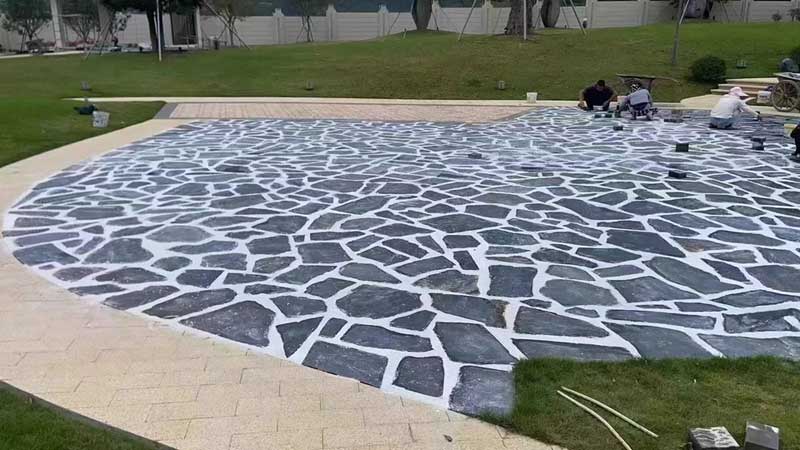15年以上の経験を持つプロの造園家として、私は無数の美しいクレイジーな舗装のインスタレーションが、貧弱に満たされたギャップに悩まされているのを見てきました。これらのギャップは見苦しいだけではありません。治療せずに残ると、深刻な構造的な問題と雑草の成長につながる可能性があります。それらのギャップを正しく満たすことは、あなたの美学と寿命の両方にとって重要です クレイジー舗装。モルタルであろうと砂を使用しているかどうかにかかわらず、適切なテクニックは、プロのように見える仕上げとDIY災害のすべての違いを生みます。あなたのクレイジーな舗装でその完璧な仕上げを達成するための私の実証済みの方法を共有させてください。準備からアフターケアまで、各ステップをご覧ください。適切なギャップ充填は、審美的な魅力を維持しながら、あなたのクレイジー舗装の寿命を最大15年延長することができます。
ギャップ充填プロセスを開始する前に何をすべきですか?
適切な準備は、プロのように見える結果と残念なギャップを埋める仕事とのすべての違いをもたらします。 15年以上にわたってクレイジー舗装で働いている人として、私は、人々が本質的な基礎なしでまっすぐに充填するために、数え切れないほどのDIYの試みが失敗するのを見てきました。
最初に最初のこと – それらのギャップをきれいにきれいにしましょう。 徹底的な洗浄プロセスにより、古いモルタルの残骸、埋め込まれた汚れ、厄介な雑草が除外され、新しいフィラーの接着を損なう可能性のある厄介な雑草。私は、より大きな領域に圧力洗浄機を使用することを好みますが、ワイヤーブラシは、より小さなスペースや詳細な作業に適しています。重要なのは、すべての破片がクリアされるようにすることです。
素材を混ぜる前にツールを集めます。必要です:
- 頑丈なワイヤーブラシまたは圧力ワッシャー
- 正確なアプリケーションのためのポインティングこて
- 混合用の大きなバケツ
- 選択したフィラー素材
- ウォータースプレーボトル
- 最終クリーンアップのためのソフトブラシ
プロのヒントは次のとおりです。開始前に天気予報を確認してください。理想的な条件には、50〜70°F(10-21°C)の温度がある乾燥した天候が含まれます。極端な温度や雨は、フィラーセットにどれだけよく影響する可能性があります。
適切な準備により、充填時間を40%短縮し、接着を60%削減できます
掃除後、ギャップを完全に乾かします。わずかな湿気でさえ、フィラー材料の結合を弱める可能性があります。私は通常、充填プロセスを進める前に掃除の24時間後に待ちます。この忍耐は、より耐久性のある結果で長期的には報われます。
薄い測定ツールを使用して、ギャップの深さをテストします – これにより、必要な充填材の量を判断するのに役立ちます。ほとんどのクレイジーな舗装パターンでは、最適な強度と寿命のために、ギャップを約25〜30mmの深さまで埋める必要があります。
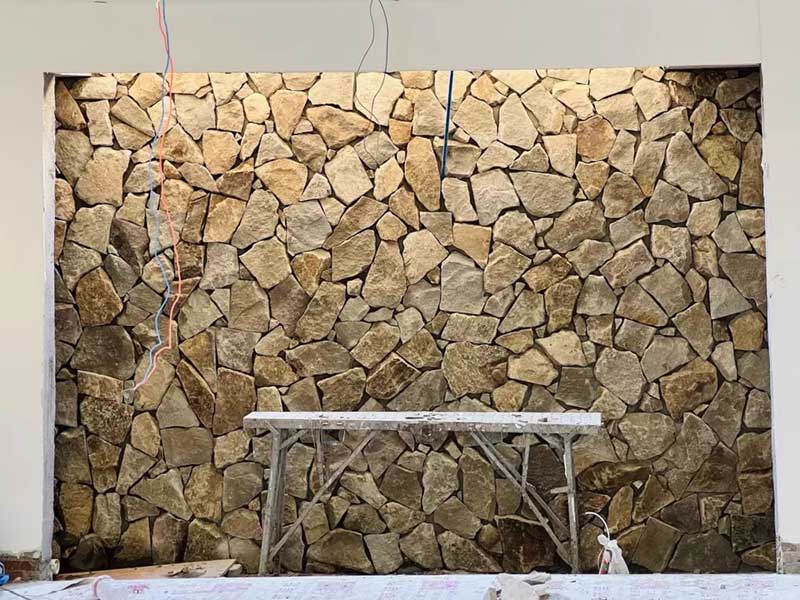
どの充填材があなたの舗装に最適に機能しますか?
ギャップが適切に清掃され、準備されたので、大きな決断に取り組みましょう – 充填材としてモルタルと砂のどちらかを選択します。数え切れないほどのクレイジーな舗装ギャップを埋める私の長年の経験を通して、私はそれぞれの素材には明確な利点があることを学びました。
モルタルは、私道やメインの通路などの交通量の多いエリアのための私の選択肢のままです。それは、重い歩行者と過酷な気象条件に耐える堅牢で永続的な絆を作り出します。私は通常、最適な強度のために、3部の鋭い砂の混合物を1部のセメントにすることをお勧めします。トレードオフ?正しく適用するには、より多くのスキルと精度が必要です。
パティオと装飾エリアでは、ki kilが乾燥した砂が優れた利点を提供します。アプリケーション中はより寛容であり、私のクライアントの多くが好む自然で素朴な外観を維持しています。さらに、割れずにわずかな地面の動きを可能にします – 霜が降りになりやすい地域の厳格な迫撃砲の一般的な問題。
各素材の特性の実際の内訳は次のとおりです。
| 特性 | モルタル | キルン乾燥した砂 |
|---|---|---|
| 耐久性 | 15〜20年 | 5〜7年 |
| 平方フィートあたりのコスト | $ 3-5 | $ 1-2 |
| スキルレベル | 高い | 低い |
舗装メンテナンスの新しい人のために、私はあなたのテクニックを完璧にするために、あまり目に見えない領域で砂で始めることをお勧めします。エラーのマージンははるかに寛容であり、自信が高まるにつれて、いつでもモルタルに切り替えることができます。
適切な材料の選択は、メンテナンス頻度を最大75%減らすことができます
重要なヒントの1つ:選択に関係なく、常に舗装ジョイント専用に設計された材料を購入してください。通常の建物の砂またはモルタルミックスは、同じレベルのパフォーマンスを提供しません。特殊な製品には、耐久性と気象抵抗を高める添加物が含まれています。
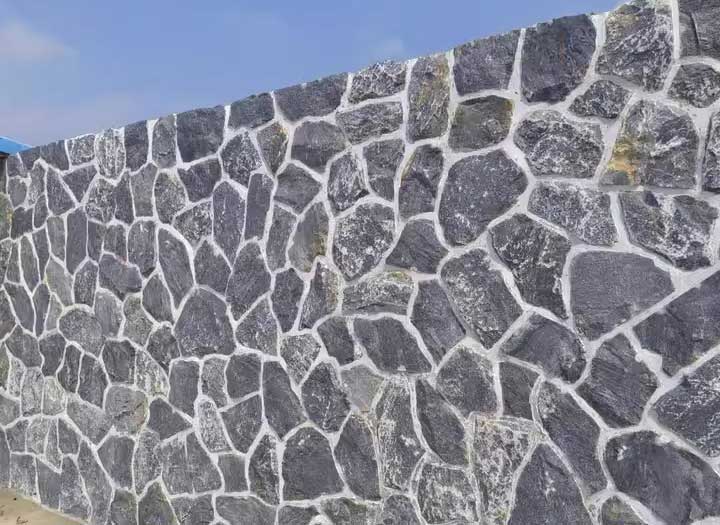
充填材を正しく適用するにはどうすればよいですか?
充填資料を選択した状態で、申請プロセスに焦点を当てましょう – クレイジーな舗装プロジェクトのメイクまたはブレイクの瞬間。私のキャリアに対する無数のギャップを埋めた後、私は一貫して専門的な結果をもたらすテクニックを開発しました。
モルタルアプリケーションの場合、私は常にコーナーから始めて、約2〜3平方メートルの管理可能なセクションで作業します。 キーは、適切な一貫性を達成することにあります – モルタルミックスは、その形を保持するのに十分なしっかりしているはずですが、ギャップに簡単に作業するのに十分な濡れているはずです。歯磨き粉よりもわずかに硬いと考えてください。
これが私の実績のある段階的なアプローチです。
- ポインティングのこてをモルタルでロードします
- 45度の角度で各ギャップにミックスをしっかりと押してください
- 均一な配布のために舗装を斜めに作業します
- こてで表面を滑らかにします
- 湿った布ですぐに過剰をきれいにします
砂の詰め物の場合、プロセスはわずかに異なります。舗装全体にkiな砂を注ぎ、柔らかいブラシを使用して、表面を斜めに掃除します。斜めの掃引運動は、砂が単に上に座るのではなく、関節に深く浸透するのに役立ちます。
| 一般的な間違い | 解決 |
|---|---|
| 関節のオーバーフィリング | 表面下1〜2mmまで塗りつぶします |
| エリアが大きすぎる | 2〜3m²のセクションに固執します |
| ミックスの一貫性が誤っていません | こてスタンドアップ方法でテストします |
正しいアプリケーションテクニックは、充填の耐久性を最大50%増加させる可能性があります
私がいつも共有する1つのプロのヒント:暖かい日には、モルタルを適用する前にギャップを少し湿らせます。これにより、舗装がミックスから湿気を速すぎることを防ぎ、より多くの労働時間とより良い接着を与えます。
アプリケーション中にツールを頻繁に清掃することを忘れないでください – 乾燥した迫撃砲はあなたの仕事の品質に影響を与える可能性があります。迅速なツールすすぎのために、近くにきれいな水のバケツを置いています。
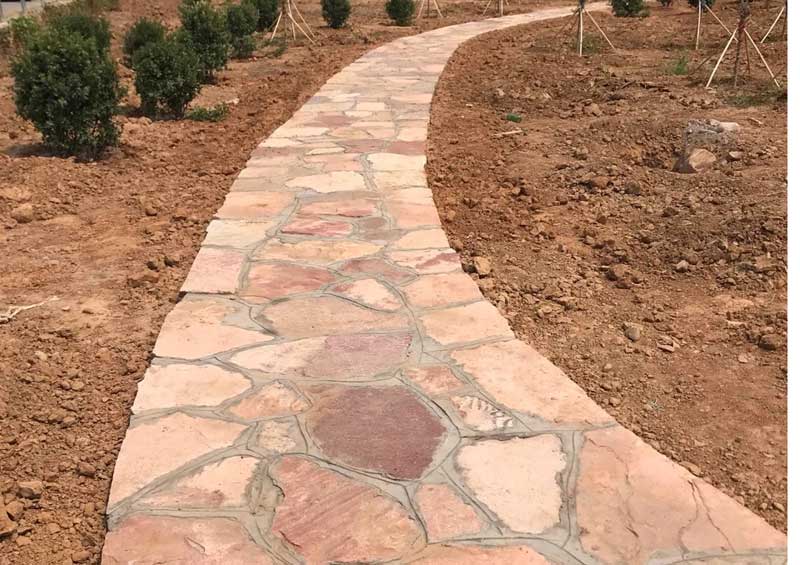
長期にわたる結果を確保するための最良の方法は何ですか?
ギャップを完璧に満たしました – それでは、彼らがそのようにとどまることを確認しましょう。私の数十年の経験を通して、私は硬化プロセスがアプリケーション自体と同じくらい重要であることを学びました。多くのDIY愛好家はこのステップを急いでいますが、数ヶ月以内に彼らの勤勉さが悪化しているのを見つけるだけです。
モルタルで満たされたジョイントの場合、最初の24時間は絶対に重要です。 鍵は、硬化プロセス全体で適切な水分レベルを維持することにあります。暑いまたは風の強い時期に、私は満たされた隙間を毎日2〜3回水で軽く霧します。新しく植えられた庭の世話をするように考えてください – 水が多すぎるか少なすぎると、結果が台無しになります。
これが私の実証済みのメンテナンススケジュールです:
- 1〜3日:暖かい気候での軽い霧
- 1週目:大量の歩行者を避けてください
- 1か月目:定期的な視覚チェック
- 6か月ごと:徹底的な検査
| 気象条件 | 調整の硬化 |
|---|---|
| 熱い & サニー(>25°C) | 毎日3xミスト |
| 軽度(15〜25°C) | 毎日1〜2xミスト |
| いいね (<15°C) | 毎日1回軽い霧 |
砂で満たされたジョイントの場合、プロセスはわずかに異なります。軽いスプレーは、砂が隙間に適切に落ち着くのに役立ちますが、過度に濡れないようにします。噴霧器に細かいミスト設定を使用することをお勧めします – あなたは侵食ではなく、穏やかな定住を目指しています。
適切な硬化手順に従うことで、ギャップの寿命を最大5年延長できます
よく見過ごされている側面の1つは、季節のメンテナンスです。私はいつもクライアントに、冬の霜や大規模な夏の雨の後に彼らの舗装をチェックするように言っています。早期にキャッチされた小さな問題は、後で大きな問題を防ぎます。迅速な修理のために、余分な充填材料を便利に保ちます – エリア全体をやり直すよりも、小さなセクションを修正する方がはるかに簡単です。
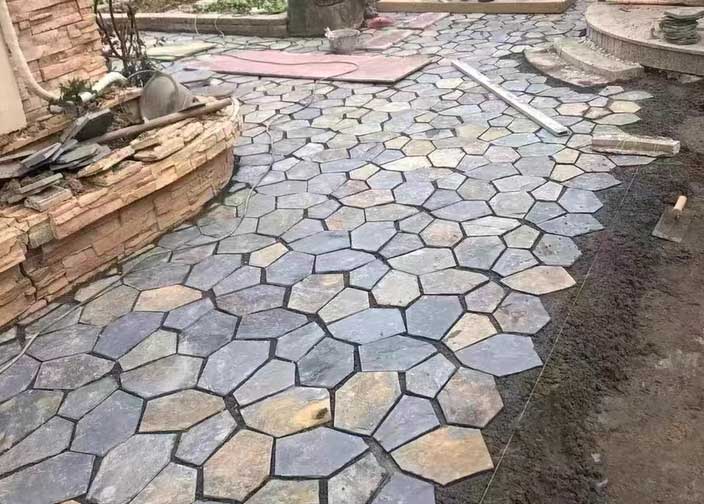
結論
隙間を埋める クレイジー舗装 美学だけではありません。投資を保護することです。これらの専門的なテクニックに従い、舗装を適切に維持することで、今後何年も美しく耐久性のある表面を楽しむことができます。準備に時間を費やし、適切な材料を使用することが成功の鍵であることを忘れないでください。
外部リンクの推奨

